
|
Astronomy Picture Of the Day (APOD)
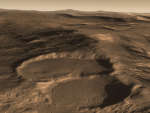 Radar Indicates Buried Glaciers on Mars
Radar Indicates Buried Glaciers on Mars
24.11.2008
What created this unusual terrain on Mars? The floors of several mid-latitude craters in Hellas Basin on Mars appear unusually grooved, flat, and shallow. New radar images from the Mars Reconnaissance Orbiter bolster an exciting hypothesis: huge glaciers of buried ice.
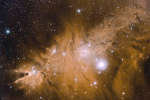 In the Vicinity of the Cone Nebula
In the Vicinity of the Cone Nebula
23.11.2008
Strange shapes and textures can be found in neighborhood of the Cone Nebula. The unusual shapes originate from fine interstellar dust reacting in complex ways with the energetic light and hot gas being expelled by the young stars.
22.11.2008
In this panorama of Earth and sky recorded on Thursday, November 13, the Full Moon rises along the eastern horizon at the far left. Of course, the Full Moon rises at sunset and that Thursday's setting Sun was also captured at the far right.
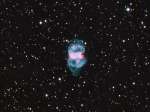 M76 Above and Below
M76 Above and Below
21.11.2008
Also known by the popular name the "Little Dumbbell Nebula", M76 is one of the fainter objects listed in Charles Messier's 18th century Catalog of Nebulae and Star Clusters. Like its better-known namesake M27 (the Dumbbell Nebula), M76 is recognized as a planetary nebula - a gaseous shroud cast off by a dying sunlike star.
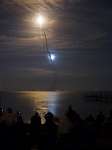 Endeavour in the Moon
Endeavour in the Moon
20.11.2008
Glaring near the top of the frame, the shuttle orbiter Endeavour rockets into the night on the STS-126 mission. Endeavour left planet Earth on November 14 from Launch Pad 39A at NASA's Kennedy Space Center, making the 27th flight to the International Space Station.
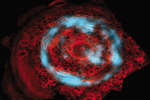 Unusual Auroras Over Saturns North Pole
Unusual Auroras Over Saturns North Pole
19.11.2008
What's causing this unusual aurora over Saturn? No one is sure. Infrared images by the robotic Cassini spacecraft of the north pole of Saturn have uncovered aurora unlike any other seen previously in our Solar System.
 Restored: First Image of the Earth from the Moon
Restored: First Image of the Earth from the Moon
18.11.2008
Pictured above is the first image ever taken of the Earth from the Moon. The image was taken in 1966 by Lunar Orbiter 1 and heralded by then-journalists as the Image of the Century. It was taken about two years before the Apollo 8 crew snapped its more famous color cousin.
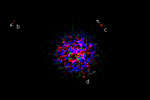 HR 8799: Discovery of a Multi planet Star System
HR 8799: Discovery of a Multi planet Star System
17.11.2008
How common are planetary systems like our own Solar System? In the twelve years previous to 2008, over 300 candidate planetary systems have been found orbiting nearby stars. None, however, were directly imaged, few showed evidence for multiple planets, and many had a Jupiter-sized planet orbiting inside the orbit of Mercury.
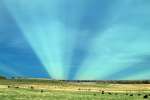 Anticrepuscular Rays Over Colorado
Anticrepuscular Rays Over Colorado
16.11.2008
What's happening over the horizon? Although the scene may appear somehow supernatural, nothing more unusual is occurring than a setting Sun and some well placed clouds. Pictured above are anticrepuscular rays. To understand them, start by picturing common crepuscular rays that are seen any time that sunlight pours though scattered clouds.
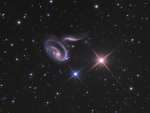 Arp 273
Arp 273
15.11.2008
The two prominent stars in the foreground of this colorful skyscape are well within our own Milky Way Galaxy. Their spiky appearance is due to diffraction in the astronomer's telescope. But the two eye-catching galaxies in view lie far beyond the Milky Way, at a distance of about 200 million light-years.
|
January February March April May June July August September October November December |
|||||||||||||||||||||||||||||||||||||||||||||||||